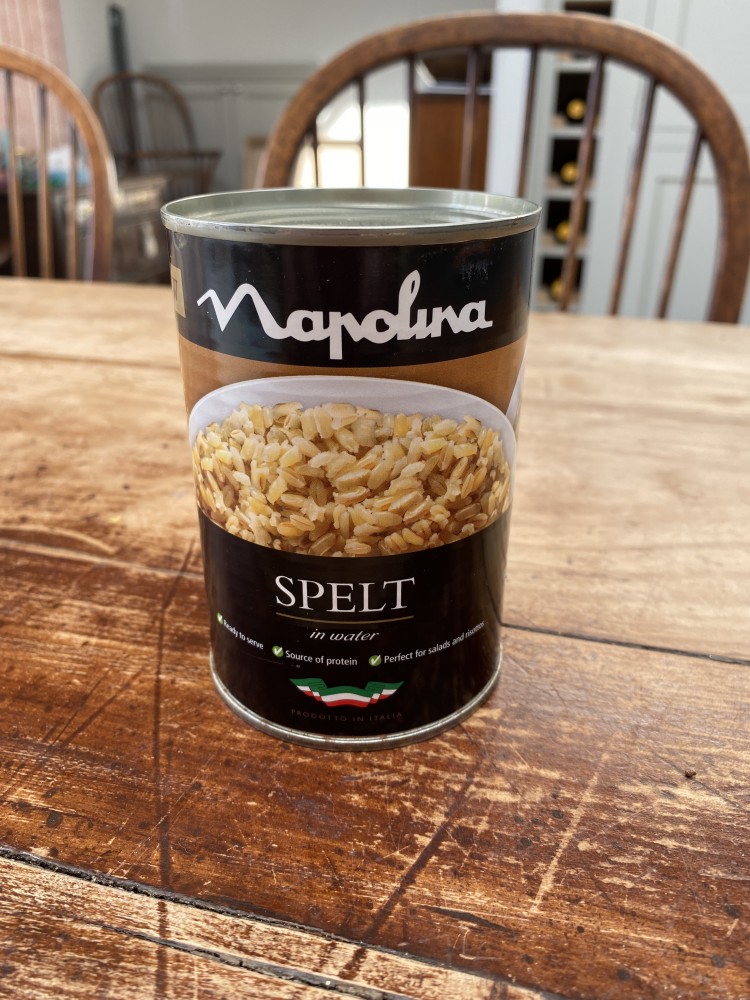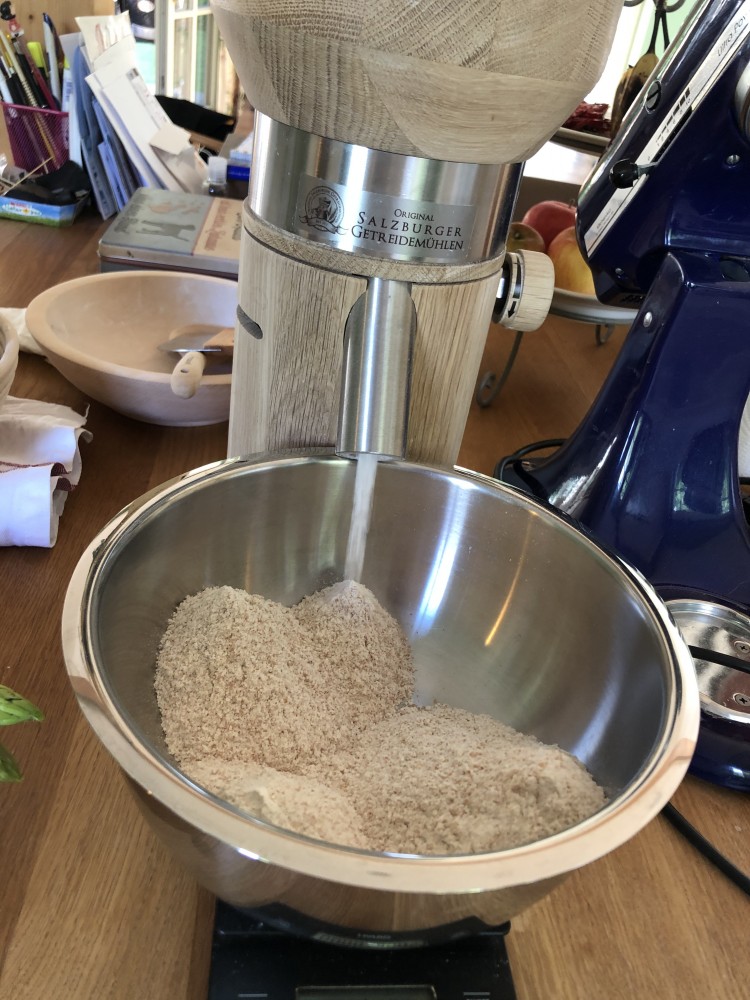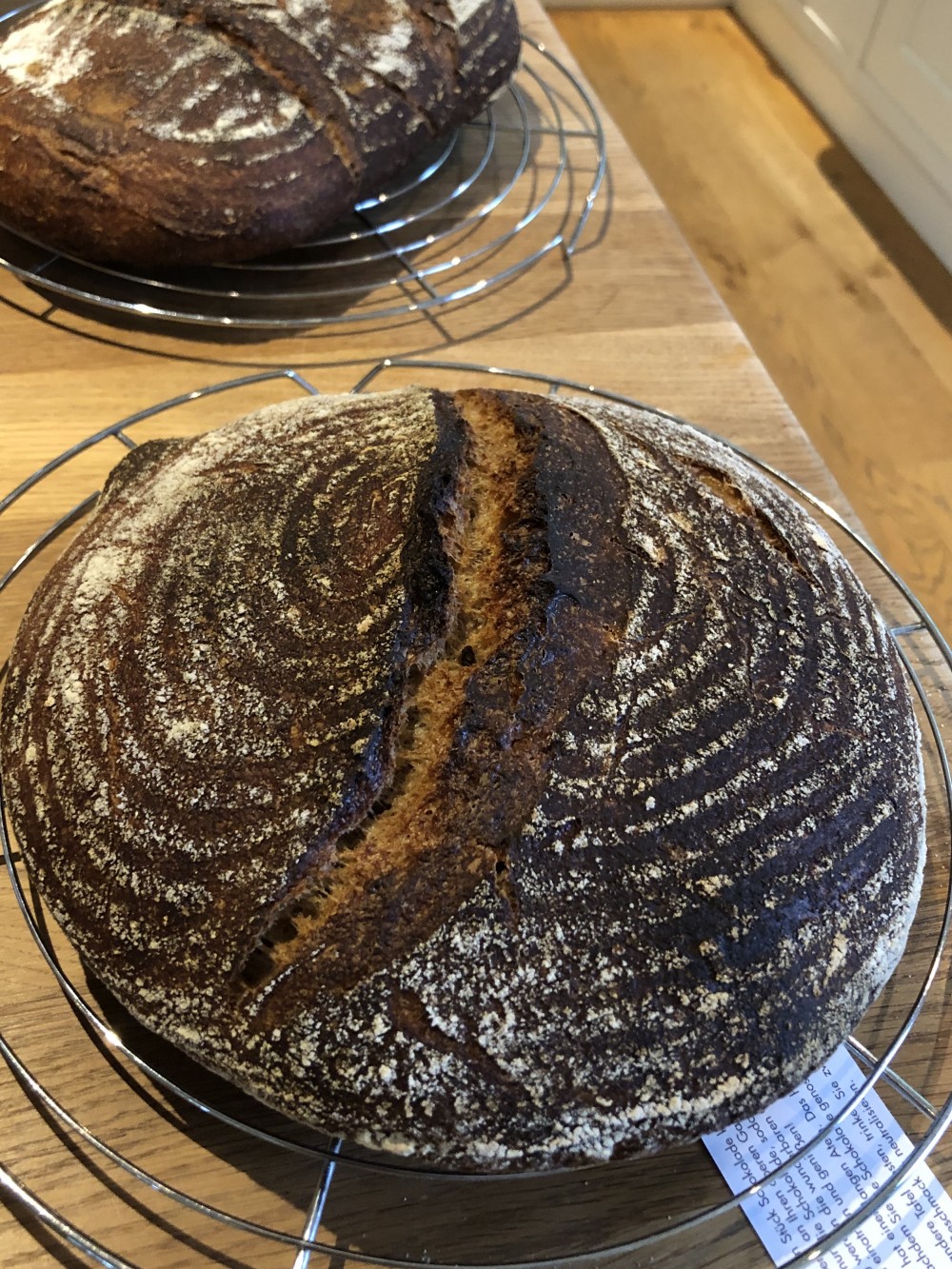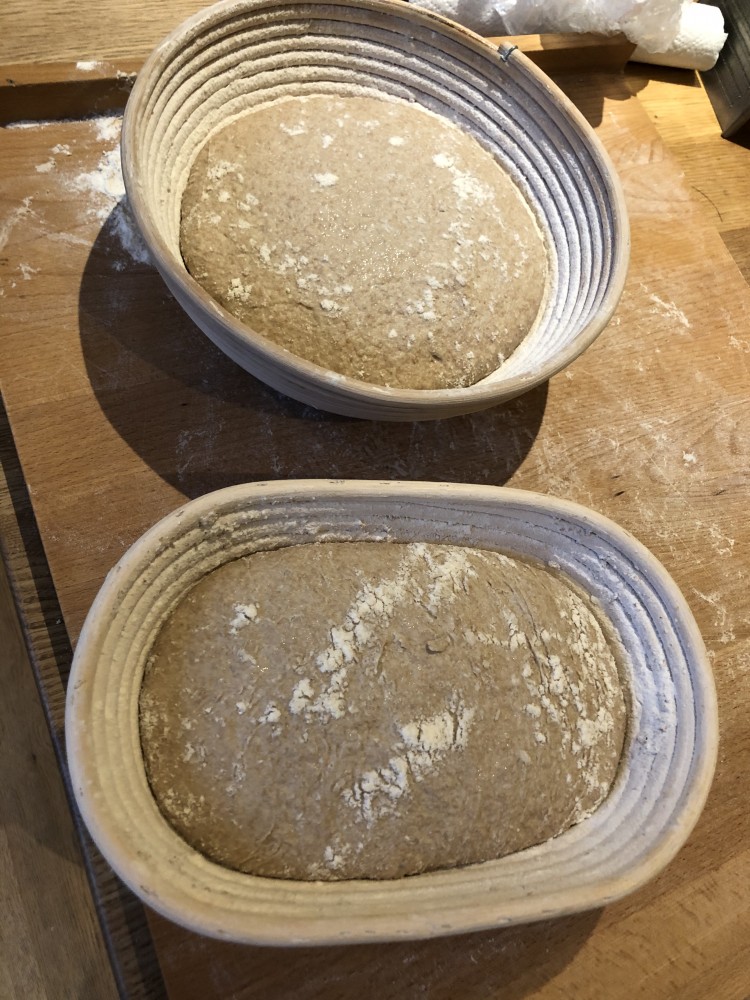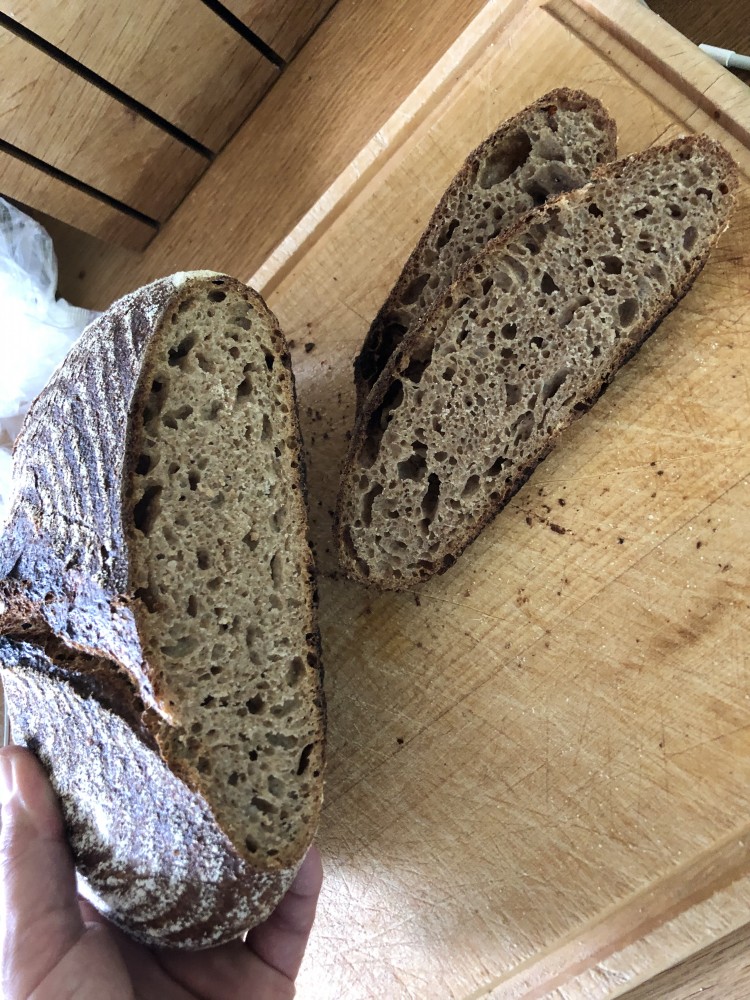Bread - What are you baking today…..
-
@Stuart.T I currently have two starters on the go, one from rye and one from spelt. I ditched the mix of wholemeal and bread flour early on, in fact the spelt starter has only been made on spelt.
Both of mine took only 48hrs before they were ready but I have a cupboard above my fridge freezer with a constant ambient temp of around 26C. I’ve seen people say 4-7 days. So it may take a while yet.
Temperature is important. Steady and above 20C is ideal, no drafts. The type of flour should be high in protein, wholemeal and organic. The quality of water may affect things. I’ve read that water with a lot of chemicals can cause problems by killing the bacteria on the flour. Finally don’t seal your container. The starter needs air.
Post some pics… I feel like I should be able to spot a living starter by now.
-
Thanks folks. No hope of finding spelt or rye in these parts. 3 local wholefood shops cannot get them back in yet. I've had problems buying flour at all, so settled on organic strong white and stoneground. I haven't mixed the flours, thought I'd try them separately first. Pics later.
I read on the sourdough.co.uk site that live (dried etc) yeasts need heat, natural yeasts need to be slightly cooler.
I keep mine in plastic cannisters (started with Kilner jars… Photogenic but impractical!), lid ajar, ambient temp approx 20c during the day, slightly less at night. Feed them once a day, some sites say you can do this twice a day. They smell pretty good, the stone ground slightly vinegar, the white slightly sweeter.
-
@Stuart.T These guys have reasonable stock levels of some flours:
https://www.fwpmatthews.co.uk/
Including Spelt
https://www.fwpmatthews.co.uk/product/white-spelt-flour/And rye
https://www.fwpmatthews.co.uk/product/matthews-dark-rye-flour/ -
@Giles thank you very much Sir, sincerely appreciated. I much prefer flavoursome flours such as rye and spelt. I will give them a go.
-
Spelt is in short supply up here too. I scored some the other day, happily. Bloody loads of rye but I expect it is more of a staple flour in Norway than in the UK.
Dried yeast likes temps between 20-37C. The blog I used as a take off point recommended 32C water when mixing the starter slightly over room temp for fermenting and I’ve stuck to that. I’d suggest the temperature is what is making it slow going.
-
Did a quick read….another source suggesting a starting temp of 32C is important....
https://en.m.wikipedia.org/wiki/Sourdough#/media/File%3ASourdough-process.svg
-
@Stuart.T mine have been a good ten days or so to get going. So much that I wondered if I messed something up. Just took some time. Ambient temps of ~70F/21C.
You’ll notice a smell for sure, but it should be pleasantly yeasty with a little tang. The resulting bread is not really sour at all. You could give it to someone who doesn’t like sourdough without telling them and they’d have no clue. -
^agree, a good read.
I made the same French Rye clone this week as last, changed proportions to:
75% bread flour
25% rye flour
79% water
4.2% cider
2.2% salt
Used 50 g of both the bread and rye flours plus 100g of the water and 50g of starter to make the levain, but otherwise followed the same schedule as previously posted. Cider was supposed to be 4%, but I froze the remainder from last week in ice cube trays, turns out two cubes = 42g. Guess I could’ve poured off 2g.
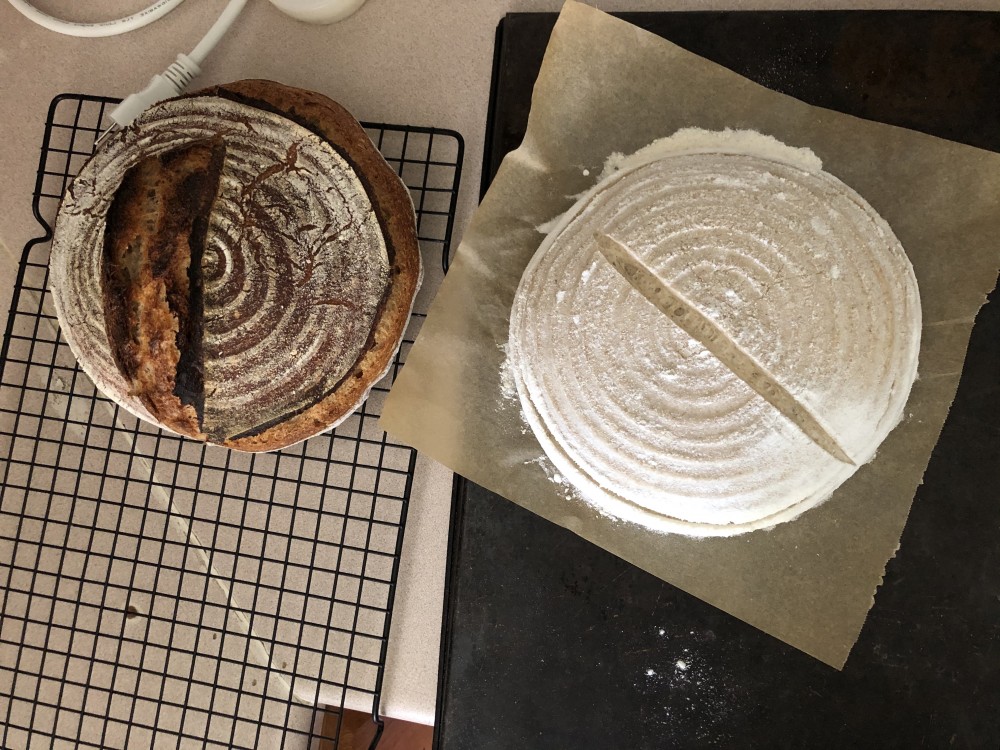
-
@neph93 I did away with the org strong white flour starter, the discarded starter didn't even make a decent pancake. I'm sticking with the org stoneground. It has a gorgeous yeasty smell now, like a brewery…
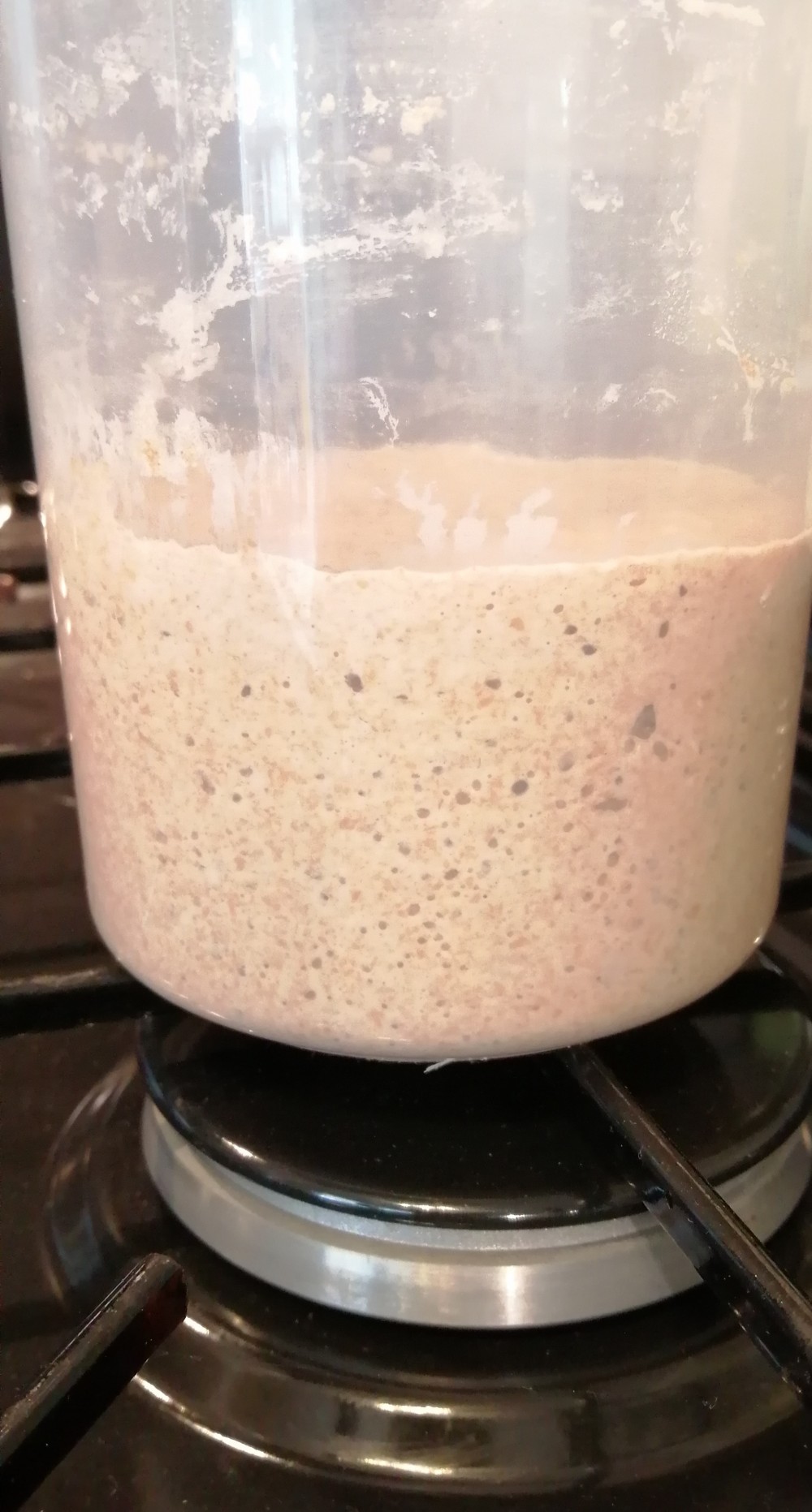
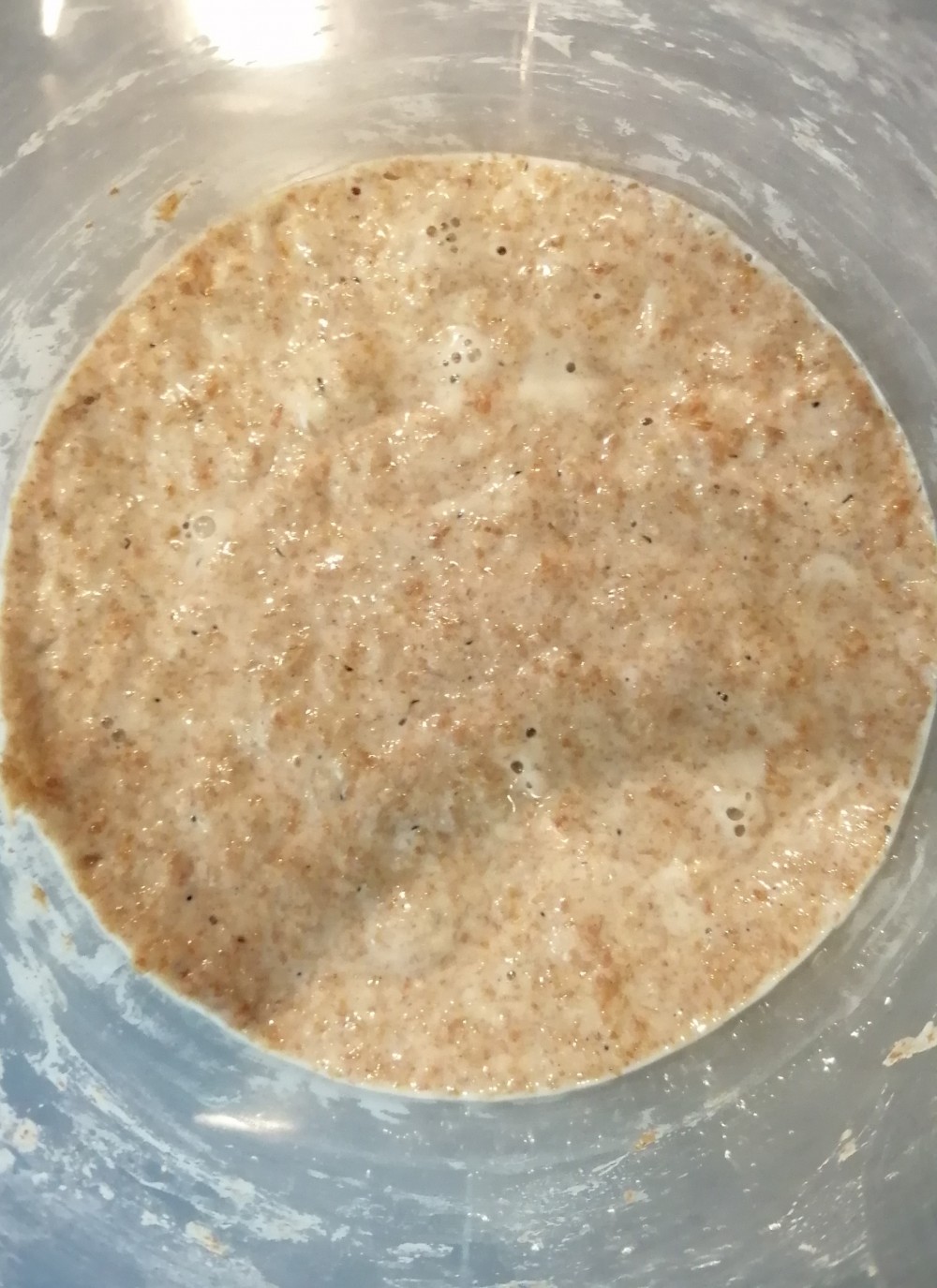
@Giles last packet in the store…
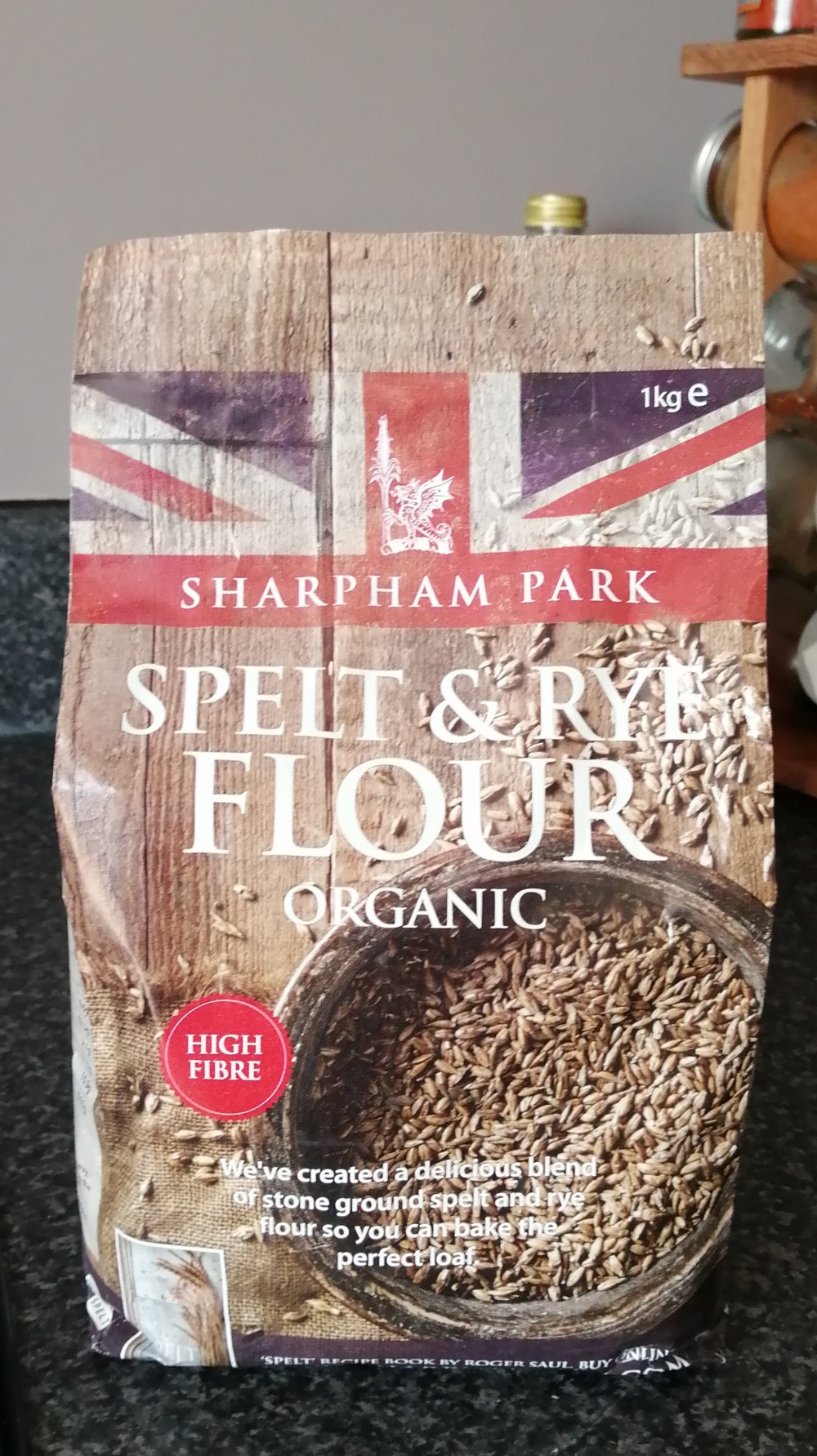
And hipster… Checking my sourdough starter while making a flat white, listening to his Velvet Underground vinyl boxset, stroking beard... Hipster, moi?

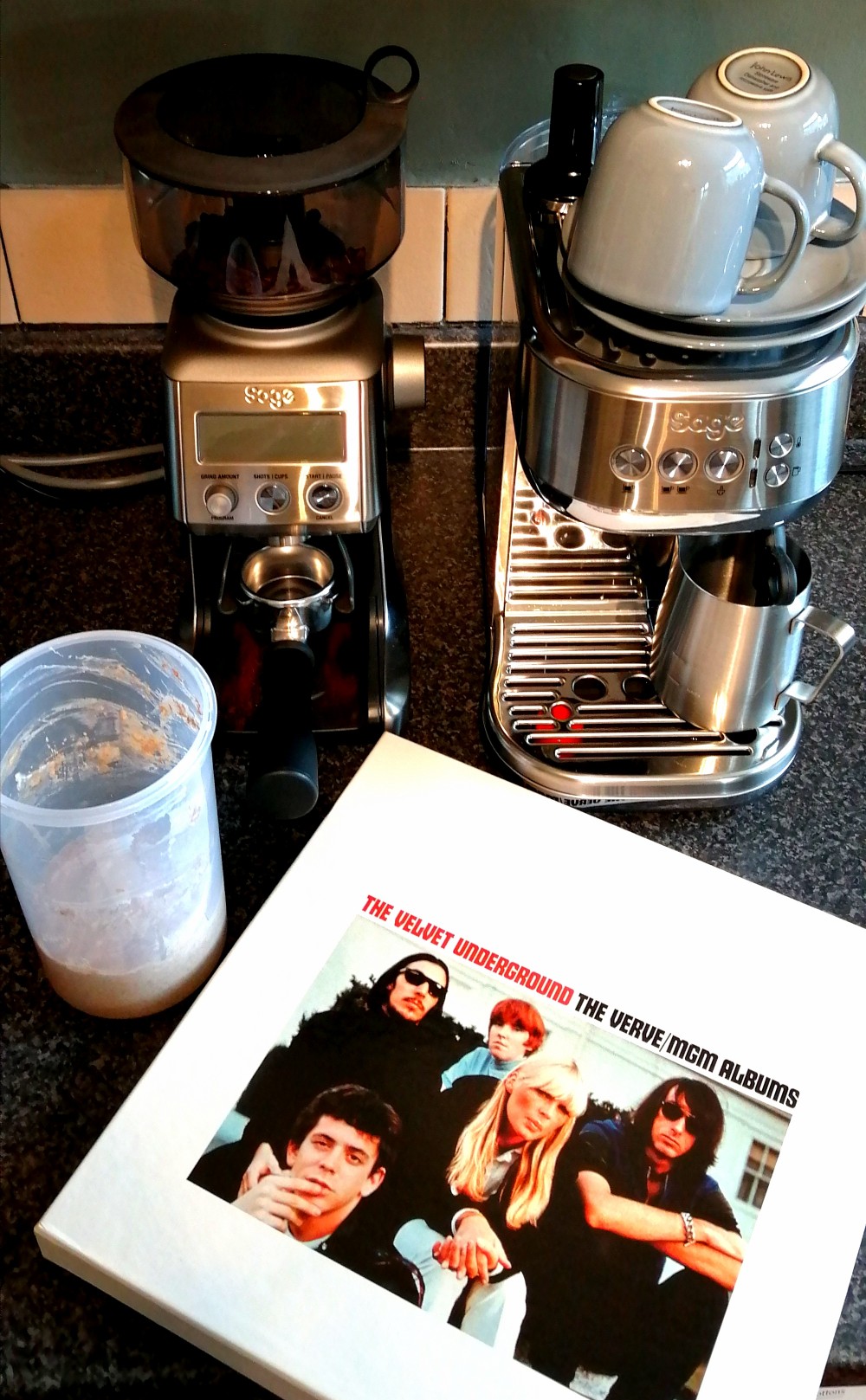
-
@Stuart.T that starter looks good. Bubbles forming and the smell you describe sounds about right. If you have a cupboard in your house that has a warmer ambient temperature I’d consider feeding it and leaving it there for 24hr. If the volume increases meaningfully and bubbles like you see now form, then I’d say you are good to go.
-
Thanks Rueben. I'll give it another feed tonight. I'm going with the 1/4/4 ratio. When I fed it usually rises and drops by double. Next weekend I might give a loaf a go! Thanks for the advice folks.
-
The eternal tweaking continues. 30/70 spelt and refined strong wheat, and 82% hydration today. Not overproofed (12 hour fridge ferment after four hour bulk).
I really enjoy working with the high hydration dough now, but that and the combination of relatively high amounts of spelt make it hard to get pleasingly formed loaves. The oven spring on these was meaningful but the spelt and hydration means that the dough spreads readily on oven plate.
I’m expecting a great taste and a decent crumb nonetheless.


-
Look great. No planning done and we are out of Bread, so I'm going to do a Forkish Saturday bake. Which is just a bread that can be made on the same day. Autolyzing happening as I type…
Nice… i’m going to order that book, and look at the biga recipes you tipped me on soon. But it will be a summer holiday project I think.
As for my spelt loaves, the pics are somewhat flattering. When they come out of the bannetons they have a thick «skin» with a decent amount of surface tension, but they are very loose inside. The spread outwards is immense so even with the oven spring which doubles height, they become formless.
I’ve just had a slice and it tastes amazing. Wonderful soft texture too. But they are essentially a tasty failure in terms of hipster baking. Not sure what more I can do to build strength into the dough. These had four folds in the first have of the bulk ferment which did their job.
Next tweak will be a shorter (8-10 hour) bulk ferment and less water, but I’m finding the autolyse phase with spelt requires a higher hydration than 70-75% if I’m going to get all the flour wet. We shall see...
I am also getting into a wholemeal wheat starter for the first time. It is in the cupboard now and will be used next Saturday alongside the next spelt experiment.




